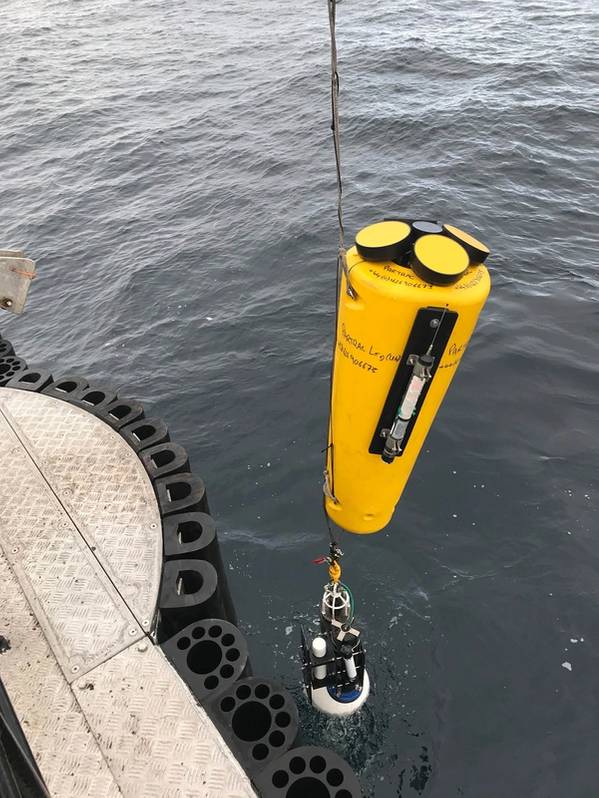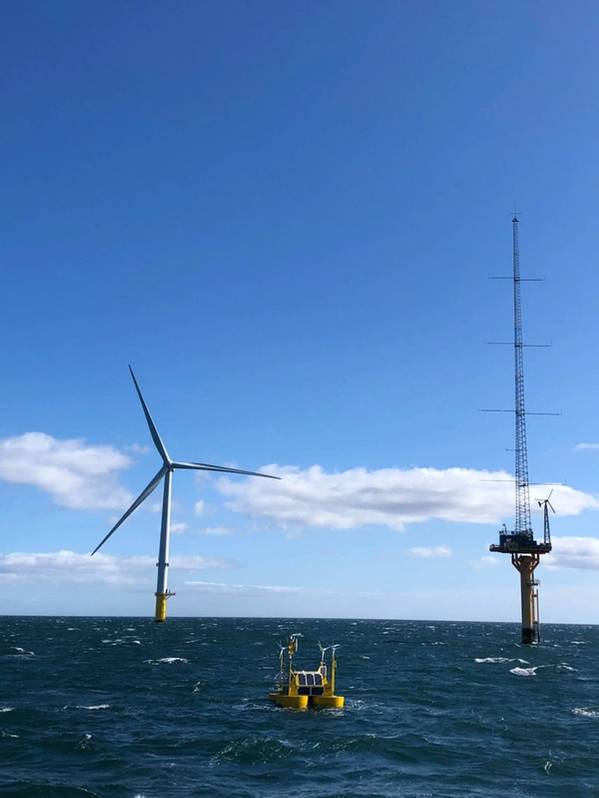Case Study: Acoustic Tech Help Offshore Wind Industry Adapt
Nortek is supporting metocean survey and consulting company Partrac to provide floating windfarm developers with detailed and accurate data on metocean conditions at potential development sites. Using acoustic Doppler current profilers (ADCPs), Partrac are able to extend their capabilities and adapt to increasingly complex offshore environments.
To date, virtually all offshore wind energy produced globally has come from turbines located in water shallower than 50m, where the turbine tower can be directly attached to the seabed. But with demand for wind power growing fast – and suitable shallow-water sites filling up in some places – the industry is now seeking to move into deeper water. However, these environments create a new set of challenges for developers.
Existing monopile or gravity designs typically used for shallow-water windfarms, which involve attaching the tower directly to the seabed, are not as simple or cost-effective to deploy in deep water. As seen in other industries, it can be more cost-effective and practical for deep-water wind turbines to be located on floating structures tethered to the seabed, potentially opening up a lot more of the ocean to windfarm developments.
Despite the advantages of using floating platforms, offshore wind developments remain complex, so obtaining the most accurate data on the metocean conditions at proposed sites is crucial. The wind resource may be plentiful, but ocean conditions in deeper water provide a different set of challenges from those in shallow waters close to shore – and they require different tools and expertise to analyze them.
- The Future: Floating Offshore Windfarms
For Partrac, one of the UK’s leading metocean survey and geoscience consultancy providers, the rising interest in floating offshore windfarms means the company is increasingly being asked to obtain data that developers can use for site characterization and modeling in deeper water than the norm.
ADCPs have long been a crucial part of Partrac’s toolkit for constructing detailed profiles of current and wave movements around windfarms. These instruments provide highly accurate profiles of water movement using the Doppler effect to measure the shift in sound waves reflected from particles at various depths through a water column; crucially they are also able to measure the wave climate.
But moving to deeper water now requires a longer-range ADCP solution.
The Nortek team has been well placed to help with this shift, having provided ADCPs and expertise to Partrac over many years. Historically, shallow-water wind farm feasibility studies have been carried out using Nortek’s higher-frequency, shorter-range Signature and AWAC instruments. But collecting data in deeper waters requires equipment designed to withstand, and measure, extreme wave regimes, while accurately measuring currents from surface to near seabed across a greater depth.
With these challenges in mind, Nortek was able to provide Partrac with its Signature250 ADCP and accompanying subsurface buoy. The instrument allows users to measure currents and directional waves up to 200 m for current profiling, and 150 m for wave height and direction, making it the preferred choice for deeper-water wind turbine sites.
 Nortek’s Signature250 in the accompanying subsurface buoy is simply lowered into the water using a winch deployment from the back of the vessel. Image courtesy Nortek
Nortek’s Signature250 in the accompanying subsurface buoy is simply lowered into the water using a winch deployment from the back of the vessel. Image courtesy Nortek
“We needed an instrument for deeper water that could still measure both current profiles and the wave climate. The Signature250 has proven to provide exceptional data thus far,” says Pete Wilson, Operations Director at Partrac.
“We consider Nortek’s instrumentation design and technology very progressive and adoptive of the developments in information technology in general,” he says. Oceanographic deployments in harsh environments are, by their nature, a risky business, but those risks need to be minimized. Sensors and ancillary equipment must be robust, reliable, and easy to retrieve. Lost or faulty sensors mean lost data, and potentially lost business for companies like Partrac, who are required to deliver accurate data to their clients on time.
This was Partrac’s first deployment of the Signature250 in the configuration used, so Nortek ensured the team was well supported with advice, as well as channeling feedback to Partrac from others operating in similar environments.
Pete Wilson said he hopes his company’s work will help drive forward the offshore renewables sector in Europe.
“The data and the advice we provide is critical in both the early-stage site feasibility and consenting stages and later during the engineering process,” he says.
Floating wind is a niche technology, but it is quickly gaining traction. The GWEC estimates floating wind generation capacity globally could rise to over 6 GW by 2030, compared to less than 0.07 GW in 2019. And growth could be a lot higher than that if development costs decrease – a likely prospect, as the efficiency and size of turbines increases and companies gain more experience of building floating windfarms.
 Partrac is a leading provider of data for offshore wind sites, such as this one near Blyth in northeastern England. The company’s floating lidar technology solution, seen in action here, provides reliable and robust wind and oceanographic data, permitting excellent data availability even in rough weather.
Partrac is a leading provider of data for offshore wind sites, such as this one near Blyth in northeastern England. The company’s floating lidar technology solution, seen in action here, provides reliable and robust wind and oceanographic data, permitting excellent data availability even in rough weather.










